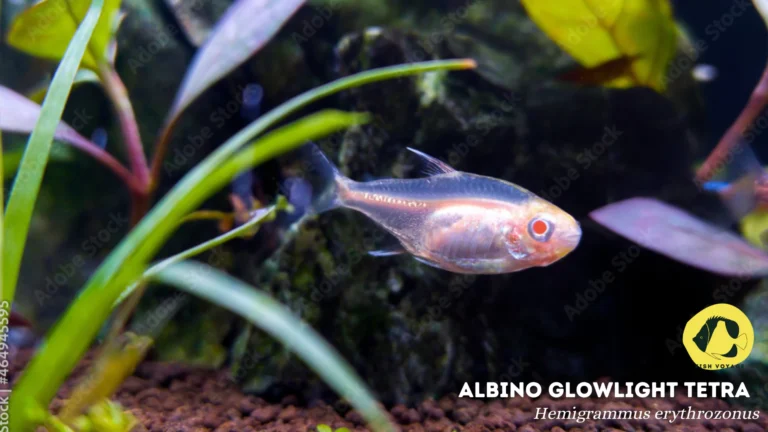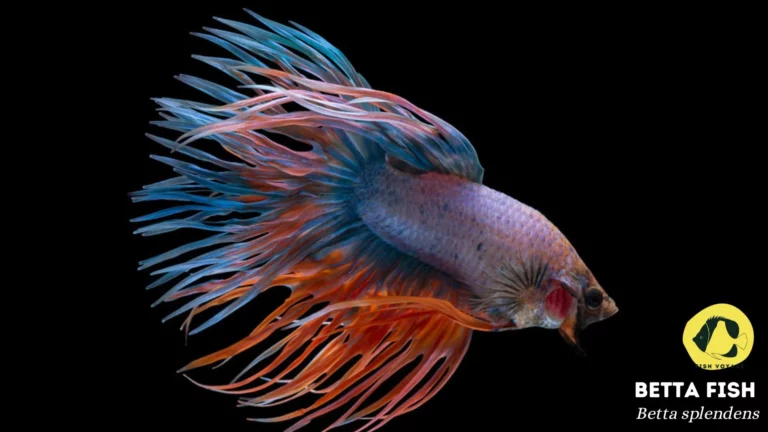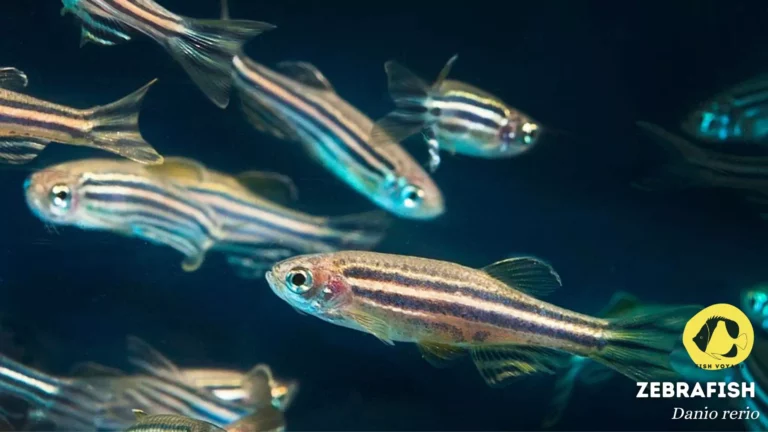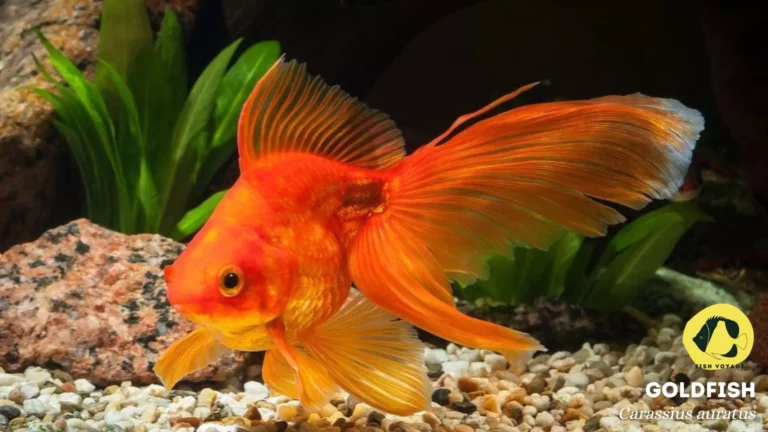The Ultimate List of Dwarf Corydoras Tank Mates

In the enchanting realm of aquarium keeping, Dwarf Corydoras emerge as beloved aquatic companions, captivating enthusiasts with their diminutive size and endearing demeanor. Renowned for their playful antics and unique appearance, these small catfish species add charm to home aquariums. However, the key to fostering a flourishing aquatic community lies in the thoughtful selection of tank mates. The synergy between Dwarf Corydoras and compatible companions creates a harmonious environment, promoting the well-being of all inhabitants. As we delve into the intricacies of crafting a balanced aquarium ecosystem, the significance of choosing suitable tank mates for Dwarf Corydoras becomes paramount, ensuring a serene and thriving underwater world that enthusiasts can admire and cherish.
Characteristics of Dwarf Corydoras
Petite Elegance
Dwarf Corydoras, revered for their modest size, typically range between 1 to 2 inches, making them ideal for smaller aquarium setups. Their diminutive stature adds a touch of charm to aquatic landscapes, captivating enthusiasts seeking a delicate and captivating species.
Sociable Demeanor
Displaying an amiable and social behavior, Dwarf Corydoras are known for their congenial interactions within a community. They often form small groups, engaging in playful exploration and group dynamics that add vibrancy to the aquarium ambiance.
Prized Piscine Palette
Sporting an array of captivating colors and patterns, these small catfish contribute to the visual diversity of a tank. From striking speckles to intricate patterns, Dwarf Corydoras infuse aesthetic appeal into aquatic settings, captivating the eyes of onlookers.
Prudent Parameters
To ensure their well-being, it is imperative to replicate their natural habitat conditions. Maintain a temperature range of 72 to 78°F (22 to 26°C), and a slightly acidic to neutral pH level (6.0-7.0). These conditions mirror their native South American habitats, fostering a comfortable and thriving environment.
Beneath the Substrate
Acknowledging their bottom-dwelling inclination, providing soft substrates like sand becomes crucial. The Dwarf Corydoras’ barbels, sensitive facial appendages, benefit from a soft substrate, preventing abrasions and ensuring their continued health.
The Need for Hiding Havens
Offering suitable hiding spots is paramount to cater to their shy nature. Driftwood, caves, and plants serve as refuge, enabling Dwarf Corydoras to retreat when needed, reducing stress and enhancing their overall sense of security.
In crafting the optimal environment, these facets collectively contribute to the overall well-being of Dwarf Corydoras, underscoring the importance of meticulous care and attention to detail in aquarium maintenance.
Choosing Compatible Tank Mates
Size Synergy
Selecting tank mates that align in size with Dwarf Corydoras is paramount to prevent unintentional conflicts. Larger fish may perceive them as prey, causing stress and potential harm. Opt for species of similar size to ensure a harmonious cohabitation within the aquarium.
Temperamental Harmony
Consider the temperament of potential tank mates, aiming for species with a calm and non-aggressive disposition. Dwarf Corydoras thrive in peaceful communities, making them ideally suited for companions that share a tranquil nature. Aggressive or territorial fish may induce stress, negatively impacting their well-being.
Water Parameter Consistency
Maintaining a cohesive aquatic environment requires aligning the water parameters of potential tank mates. Ensure that the pH, temperature, and hardness preferences of Dwarf Corydoras align with those of the selected companions. This congruence fosters a stable ecosystem, promoting the health and vitality of all inhabitants.
Dietary Compatibility
Assessing the dietary needs of both Dwarf Corydoras and potential tank mates is crucial. Opt for species that share similar dietary preferences, minimizing competition for food resources. This consideration not only sustains the nutritional balance of each species but also fosters a cooperative feeding environment.
Bottom-Dweller Companions
Given their affinity for the lower regions of the tank, choosing compatible bottom-dwelling species enhances the overall balance. Small, peaceful catfish, such as other Corydoras species, or bottom-dwelling tetras, contribute to a dynamic yet harmonious underwater community.
Behavioral Compatibility
Understanding the behavioral tendencies of both Dwarf Corydoras and prospective tank mates is essential. Avoid species with overly territorial behaviors or those prone to nipping fins, as such interactions can lead to stress and potential harm. Seek companions that complement the sociable nature of Dwarf Corydoras.
In the delicate orchestration of an aquarium community, the selection of compatible tank mates stands as a pivotal factor. By considering size, temperament, water parameters, diet, bottom-dwelling tendencies, and behavioral compatibility, enthusiasts can curate an aquatic haven where Dwarf Corydoras and their companions coexist in a harmonious aquatic symphony.
Ideal Tank Mates for Dwarf Corydoras
Neon Tetras (Paracheirodon innesi)
- Description: Recognized for their vibrant iridescent colors, Neon Tetras bring a lively energy to the aquarium.
- Compatibility: Their small size and peaceful nature make them excellent companions for Dwarf Corydoras. Both species share similar water parameter preferences and thrive in community setups.
- Behavior and Diet: Neon Tetras are schooling fish that exhibit non-aggressive behavior. Their omnivorous diet aligns well with the dietary preferences of Dwarf Corydoras, ensuring a harmonious coexistence.

Harlequin Rasboras (Trigonostigma heteromorpha)
- Description: With their distinctive orange and blue hues, Harlequin Rasboras add a touch of elegance to the aquarium.
- Compatibility: These small rasboras are known for their peaceful demeanor, making them ideal tank mates for Dwarf Corydoras. Both species appreciate similar water conditions, fostering a cohesive environment.
- Behavior and Diet: Harlequin Rasboras are social and non-aggressive, displaying compatible behavior with Dwarf Corydoras. Their omnivorous diet complements the feeding habits of their tank mates.

Panda Corydoras (Corydoras panda)
- Description: Sharing the same Corydoras family, Panda Corydoras feature an endearing black-and-white coloration resembling a panda.
- Compatibility: Given their shared lineage, Panda Corydoras are natural companions for Dwarf Corydoras. Their comparable size, behavior, and bottom-dwelling habits contribute to a cohesive and visually appealing aquarium.
- Behavior and Diet: Both species exhibit similar behaviors and dietary preferences, creating a symbiotic relationship that enhances the overall well-being of the tank.
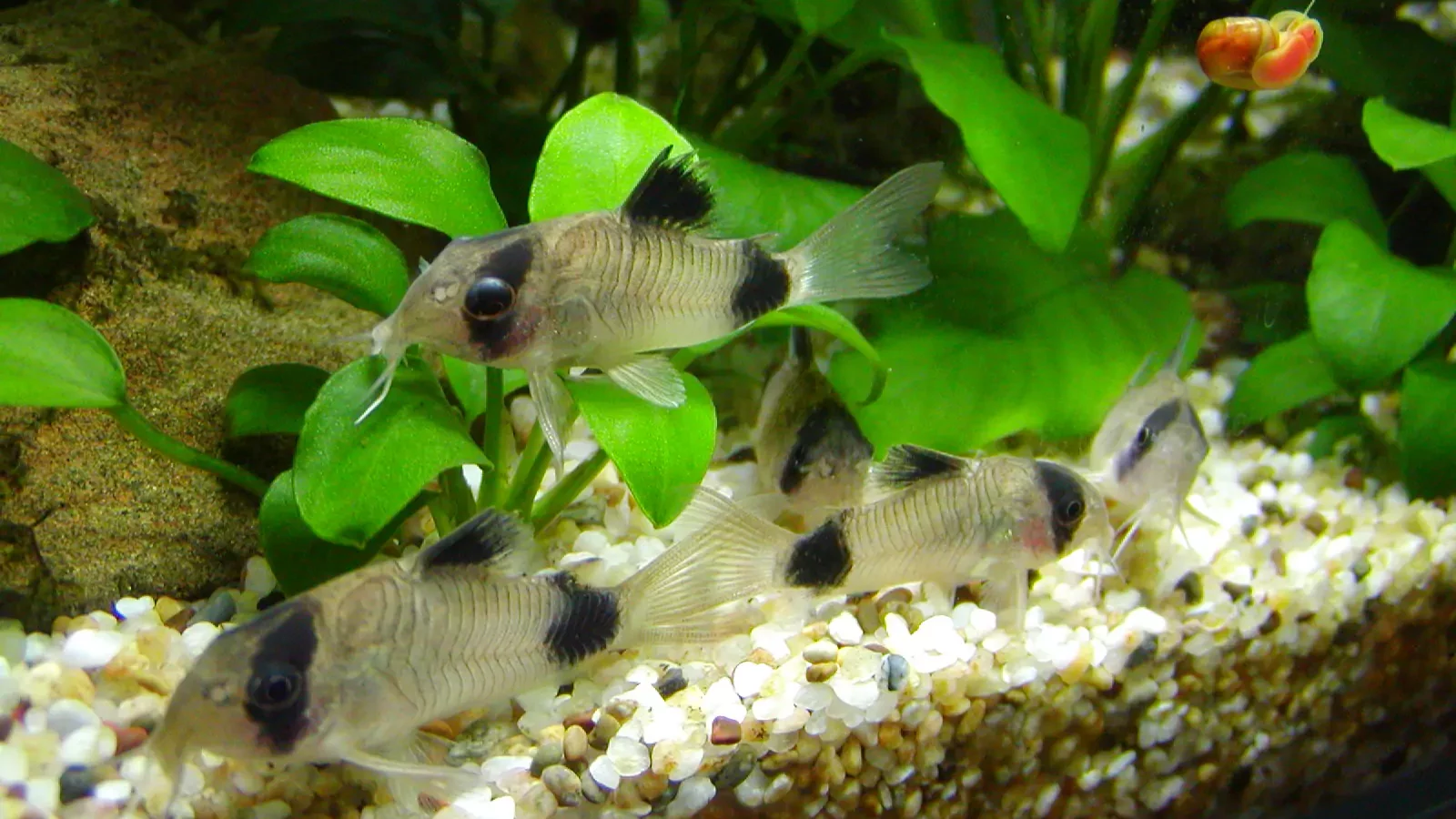
Otocinclus Catfish (Otocinclus affinis)
- Description: Recognized for their algae-eating prowess, Otocinclus Catfish are valued for their role in maintaining tank cleanliness.
- Compatibility: Their small size and non-aggressive nature make them compatible with Dwarf Corydoras. Their shared affinity for the lower regions of the tank ensures minimal competition for space.
- Behavior and Diet: Otocinclus Catfish are peaceful grazers, focusing on algae consumption. Their dietary habits complement the omnivorous nature of Dwarf Corydoras, promoting a balanced ecosystem.
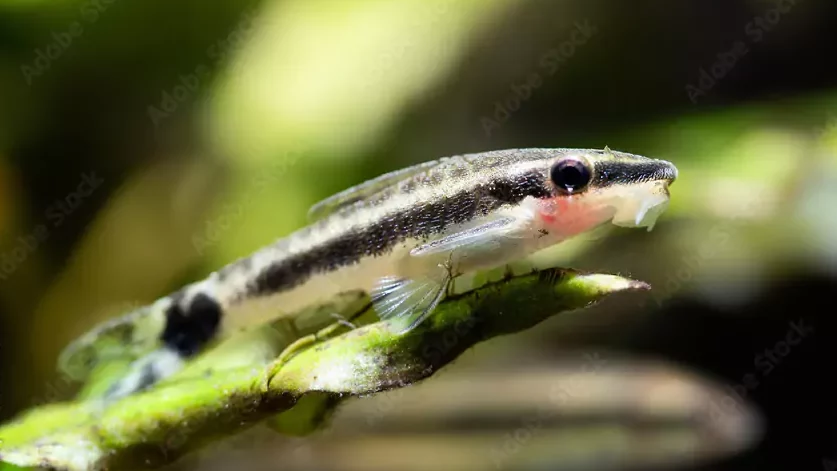
Kuhli Loaches (Pangio kuhlii)
- Description: Featuring a unique eel-like appearance, Kuhli Loaches add an intriguing element to the aquarium.
- Compatibility: Their peaceful and nocturnal nature makes them suitable companions for Dwarf Corydoras. Both species thrive in a well-planted environment with ample hiding spaces.
- Behavior and Diet: Kuhli Loaches are bottom-dwelling scavengers, complementing the feeding habits of Dwarf Corydoras. Their shared preference for similar tank conditions enhances the overall compatibility of the aquarium community.

By carefully selecting these ideal tank mates—Neon Tetras, Harlequin Rasboras, Panda Corydoras, Otocinclus Catfish, and Kuhli Loaches—enthusiasts can create a visually captivating and harmonious underwater haven where each species complements the other, fostering a thriving and balanced aquatic community.
Species to Avoid
Betta Fish (Betta splendens)
- Incompatibility: While Betta fish showcase captivating colors, their territorial and aggressive nature can pose a threat to the peace-loving Dwarf Corydoras. Betta fish may display fin-nipping behavior, causing stress and potential harm to their tank mates.
- Reasons: Betta fish prefer solitude and may perceive the small size of Dwarf Corydoras as a threat, leading to confrontations. Additionally, their distinct water parameter preferences can create challenges in maintaining a cohesive environment.

Cichlids (Various Species)
- Incompatibility: Cichlids, known for their territorial aggression, are ill-suited companions for the gentle Dwarf Corydoras. The boisterous behavior of cichlids can lead to bullying and undue stress for the smaller and more peaceful catfish.
- Reasons: Cichlids tend to be protective of their territory, and the active swimming patterns of Dwarf Corydoras may provoke aggressive responses. Divergent water parameter requirements further contribute to their incompatibility.
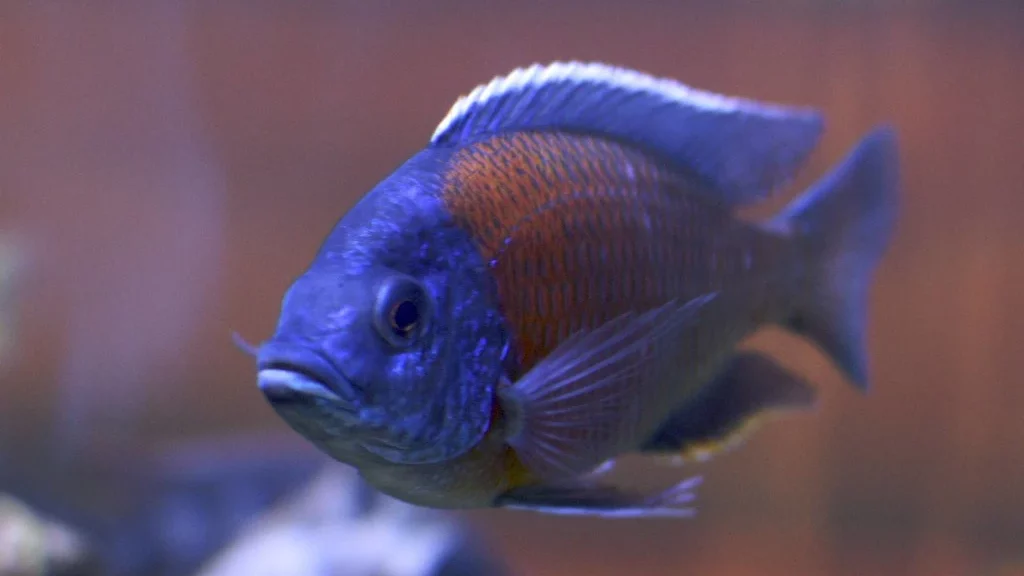
Goldfish (Carassius auratus)
- Incompatibility: Despite their popularity, goldfish and Dwarf Corydoras should not share the same habitat. Goldfish produce more waste and require cooler water temperatures, creating an unsuitable environment for the tropical Dwarf Corydoras.
- Reasons: The distinct water temperature preferences and the potential for goldfish to outcompete for food resources make them incompatible tank mates. Moreover, goldfish may exhibit fin-nipping behavior.
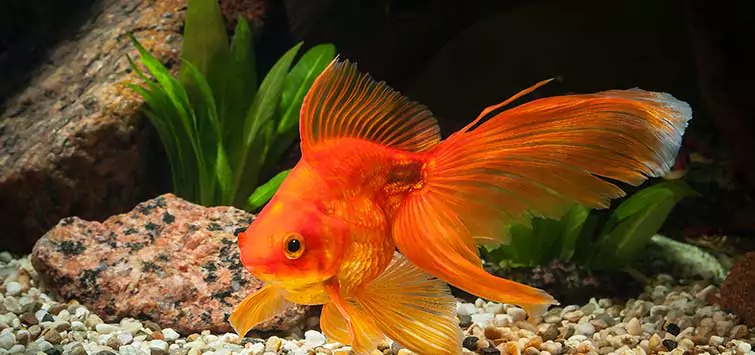
Tiger Barbs (Puntigrus tetrazona)
- Incompatibility: Known for their energetic and fin-nipping behavior, Tiger Barbs can be stressful companions for Dwarf Corydoras. The constant chasing and nipping can lead to physical harm and compromise the well-being of the smaller catfish.
- Reasons: Tiger Barbs are notorious for their aggression, especially in smaller groups. Their lively swimming patterns and tendency to nip fins make them unsuitable for the calm and subdued environment preferred by Dwarf Corydoras.
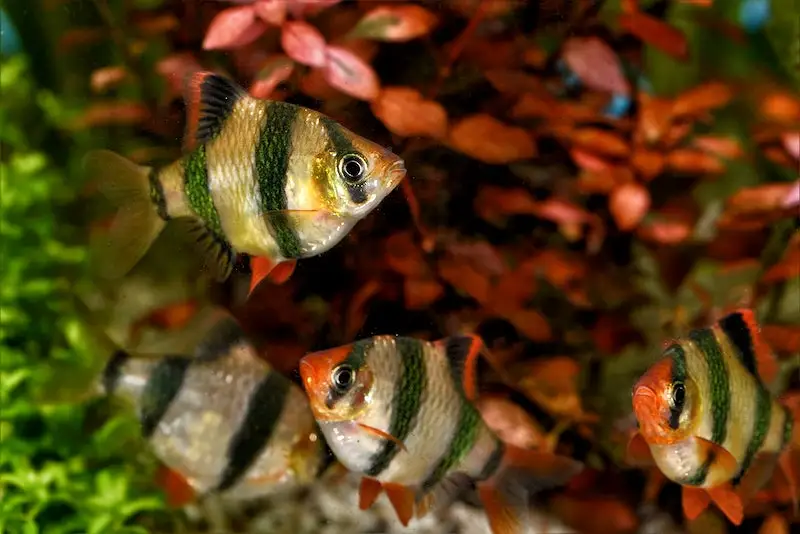
Redtail Sharks (Epalzeorhynchos bicolor)
- Incompatibility: Redtail Sharks, despite their captivating appearance, exhibit territorial and aggressive tendencies, posing a threat to the peace-loving Dwarf Corydoras. Their territorial behavior can lead to harassment and stress.
- Reasons: Redtail Sharks establish territories and may aggressively defend them, disrupting the tranquility of the aquarium. Their preference for a more streamlined, active environment contrasts with the subdued nature of Dwarf Corydoras.
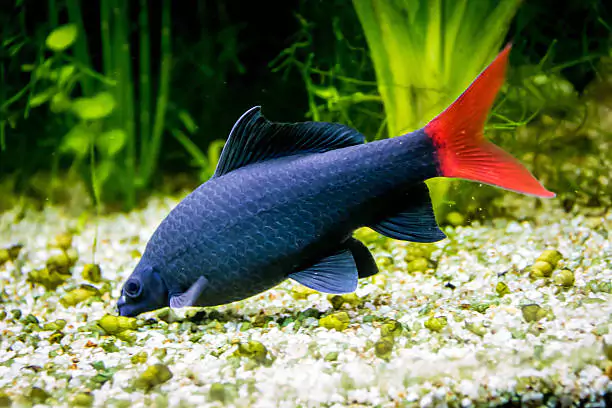
By steering clear of these incompatible tank mates—Betta fish, Cichlids, Goldfish, Tiger Barbs, and Redtail Sharks—aquarium enthusiasts can foster a serene and harmonious environment for Dwarf Corydoras, promoting their health and well-being in a carefully curated aquatic community.
Tips for Introducing Tank Mates
Gradual Introduction
- Guidance: Introduce new tank mates to an existing Dwarf Corydoras community gradually. This minimizes stress for both the current inhabitants and the newcomers, allowing them to acclimate to each other’s presence over time.
- Reasoning: Sudden additions may trigger territorial behavior or aggression. A slow introduction provides an opportunity for fish to adjust to the new dynamics without causing undue stress.
Quarantine Protocol
- Guidance: Prioritize quarantine for new fish before introducing them to the Dwarf Corydoras community. This essential step helps prevent the spread of potential diseases or parasites, safeguarding the health of the entire aquarium.
- Reasoning: Quarantine allows for observation and potential treatment of any health issues, ensuring that only healthy individuals join the existing community.
Observation Period
- Guidance: Dedicate time to closely observe the interactions between the new tank mates and Dwarf Corydoras. Pay attention to signs of aggression, stress, or any disruptive behavior.
- Reasoning: Early detection of potential issues allows for prompt intervention, maintaining the overall harmony of the aquarium community.
Similar Environmental Preferences
- Guidance: Choose tank mates that share similar environmental preferences with Dwarf Corydoras, including water parameters, temperature, and pH levels.
- Reasoning: Aligning the conditions ensures that all fish in the community thrive in a cohesive and comfortable environment, minimizing potential stressors.
Feeding Strategies
- Guidance: Be mindful of feeding strategies during the introduction of new tank mates. Ensure that all fish, including Dwarf Corydoras and newcomers, have access to an appropriate and balanced diet.
- Reasoning: Adequate nutrition reduces competition for food resources and promotes a cooperative feeding environment, fostering positive interactions among tank mates.
Provide Hiding Spaces
- Guidance: Enhance the aquarium with additional hiding spots, such as caves, plants, or decorations, to offer refuge for both new and existing tank mates.
- Reasoning: Hiding spaces help alleviate stress, providing a retreat for fish if they feel threatened. This is particularly beneficial for Dwarf Corydoras, known for their shy nature.
Monitor Water Parameters
- Guidance: Regularly monitor water parameters, especially during the introduction phase, to ensure that conditions remain stable and conducive to the well-being of all aquarium inhabitants.
- Reasoning: Fluctuations in water quality can cause stress and compromise the immune systems of fish. Consistent monitoring helps maintain a stable and healthy aquatic environment.
By adhering to these tips for introducing new tank mates to a Dwarf Corydoras community, aquarium enthusiasts can navigate the process with care and foresight, creating a harmonious environment where all inhabitants coexist peacefully.
Maintaining a Healthy Aquarium Ecosystem
Diligent Water Quality Management
- Significance: Regularly test and maintain optimal water quality as a cornerstone of a healthy aquarium ecosystem. Consistent monitoring of parameters such as pH, ammonia, nitrites, and nitrates is crucial to safeguard the well-being of Dwarf Corydoras and other tank inhabitants.
- Reasoning: Maintaining stable water conditions supports the overall health, vitality, and stress resistance of aquatic organisms, ensuring a thriving environment.
Thoughtful Filtration Systems
- Significance: Invest in an efficient filtration system tailored to the aquarium’s size and inhabitants. Proper filtration helps remove impurities, toxins, and debris, promoting water clarity and a stable biological balance.
- Reasoning: Effective filtration mitigates the risk of harmful substances accumulating, creating an environment conducive to the health and comfort of Dwarf Corydoras and their tank mates.
Strategic Water Changes
- Significance: Implement routine water changes to replenish essential minerals, remove accumulated waste, and refresh the overall environment. Consistent water changes contribute to the prevention of nutrient imbalances and the promotion of a clean and stable ecosystem.
- Reasoning: Water changes mimic the natural processes of water renewal, enhancing the well-being of aquatic organisms and fostering optimal conditions for growth and reproduction.
Appropriate Decorations and Substrate
- Significance: Choose decorations and substrate that cater to the specific needs of Dwarf Corydoras. Soft substrates, plants, and suitable hiding spots create a comfortable and secure environment, reducing stress for these bottom-dwelling catfish.
- Reasoning: Thoughtful decoration not only enhances the aesthetic appeal of the aquarium but also provides essential elements for the natural behaviors and well-being of Dwarf Corydoras.
Temperature Consistency
- Significance: Maintain a stable and appropriate temperature for the aquarium inhabitants, aligning with the preferences of Dwarf Corydoras and other species. Fluctuations in temperature can induce stress and compromise the immune system of fish.
- Reasoning: A consistent temperature promotes metabolic stability, supports healthy immune responses, and ensures the overall comfort of the aquatic community.
Disease Prevention Measures
- Significance: Implement proactive measures to prevent the introduction and spread of diseases within the aquarium. Quarantine new additions, practice good hygiene, and address potential issues promptly to safeguard the health of Dwarf Corydoras and other tank mates.
- Reasoning: Disease prevention measures contribute to the long-term well-being of the aquarium community, minimizing the risk of outbreaks and maintaining a thriving ecosystem.
In upholding these principles of proper tank maintenance—ranging from water quality management and filtration to suitable decorations and disease prevention—enthusiasts cultivate a healthy and harmonious aquarium ecosystem. This approach not only enhances the quality of life for Dwarf Corydoras but also ensures the overall well-being of every aquatic inhabitant within the carefully curated environment.
Conclusion
In the delicate art of aquarium keeping, the symbiotic relationship between Dwarf Corydoras and their tank mates unveils a captivating underwater world. From the careful selection of companions to the intricacies of maintaining a balanced ecosystem, the journey to create an optimal aquatic community is both rewarding and nuanced.
As stewards of these aquatic realms, we’ve explored the characteristics of Dwarf Corydoras, the art of choosing compatible tank mates, and the importance of thoughtful introduction strategies. Balancing the preferences of these diminutive catfish with suitable companions, maintaining water quality, and providing a conducive environment underscores our commitment to their well-being.
Moreover, the key lies not just in the introduction but in the meticulous care sustained throughout the aquarium’s life. Diligent water quality management, strategic filtration, and the thoughtful selection of decorations converge to craft an environment where Dwarf Corydoras and their companions thrive.
We invite you to share your experiences, insights, and questions in the comments section below. Your contributions enrich our community of enthusiasts, fostering a collaborative space where we learn and grow together. As the guardians of these aquatic realms, our collective knowledge and experiences create a tapestry of wisdom that elevates the art of aquarium keeping. Thank you for joining us on this exploration of Dwarf Corydoras and the intricacies of cultivating a harmonious aquatic haven.
Additional Resources
Aquarium Enthusiast Forums
Explore in-depth discussions and share your experiences on reputable forums like AquariumForum.com and Fishlore.com. Engaging with fellow enthusiasts provides a wealth of knowledge, diverse perspectives, and real-world experiences that can further enhance your journey in aquarium keeping.
Recommended Products
- Filtration System: Consider high-performance filtration systems like the Fluval FX4 Canister Filter for optimal water purification and clarity.
- Substrate: Choose soft and aquarium-safe substrates like CaribSea Eco-Complete Planted Aquarium Substrate, catering to the preferences of bottom-dwelling species like Dwarf Corydoras.
- Water Test Kit: Invest in a reliable water test kit such as the API Freshwater Master Test Kit to monitor essential water parameters consistently.
Books on Aquarium Keeping
Expand your knowledge with authoritative books like The Conscientious Aquarist by Robert M. Fenner and Encyclopedia of Aquarium & Pond Fish by David Alderton, providing comprehensive insights into the world of aquariums.
By tapping into these additional resources, you can augment your understanding of aquarium care, access a supportive community, and discover reliable products to elevate your Dwarf Corydoras aquarium experience. Continuous learning and the utilization of quality products contribute to the success and enjoyment of cultivating a thriving aquatic environment.
Frequently Asked Questions (FAQs)
1. What are suitable tank mates for Dwarf Corydoras?
Ideal tank mates for Dwarf Corydoras include small, peaceful species like Neon Tetras, Harlequin Rasboras, Panda Corydoras, Otocinclus Catfish, and Kuhli Loaches. Ensure compatibility in terms of size, temperament, and water parameters to create a harmonious aquarium community.
2. Can Dwarf Corydoras live with aggressive fish like Betta or Cichlids?
It is not recommended to house Dwarf Corydoras with aggressive species like Betta fish or Cichlids. These aggressive tank mates may pose a risk to the well-being of the gentle Dwarf Corydoras, leading to stress, injuries, and potential territorial conflicts.
3. How should I introduce new tank mates to an existing Dwarf Corydoras community?
Introduce new tank mates gradually, allowing for acclimation and minimizing stress. Utilize quarantine protocols, observe interactions closely, and ensure compatibility in terms of size, behavior, and environmental preferences for a successful introduction.
4. What decorations are suitable for a Dwarf Corydoras aquarium?
Choose soft substrates like sand, provide hiding spots with caves, plants, and driftwood. These decorations cater to the bottom-dwelling nature of Dwarf Corydoras, offering a secure environment that reduces stress and enhances their overall well-being.
5. How can I maintain a healthy aquarium ecosystem for Dwarf Corydoras?
Regularly monitor and maintain optimal water quality through testing and water changes. Invest in a suitable filtration system, choose appropriate decorations, and ensure a consistent temperature. Following these steps promotes a thriving environment, supporting the health of Dwarf Corydoras and their tank mates.

